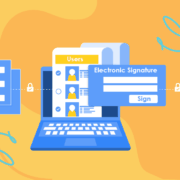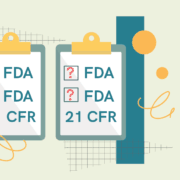Following FDA Data Integrity Guidelines Is Easier than You Think
Date: March, 2019 | Category: Compliance | Author: Ryan Szporer
Of note, the Food and Drug Administration (FDA) has official data integrity guidelines, out in full force as we speak. However, firms who are already following current Good Manufacturing Practices (cGMP) have nothing to worry about.
Of course, the title of the document in question, “Data Integrity and Compliance With Drug CGMP”, serves as clear confirmation to that effect. It also somewhat formalizes cGMP as its own set of guidelines, but it’s best to consider what that acronym stands for before overreacting and realizing good manufacturing practices as a concept just makes sense.
Meanwhile, data integrity in this instance is simply a byproduct of cGMP, but achieving it is just as critical if not more so in this day and age.
Data Integrity and Security
Take for instance how compliance with the General Data Protection Regulation, or GDPR, is an ever-present item on the task lists of firms in the European Union these days. The security of customer data has become more critical in the internet age and data security and integrity simply go hand in hand.
For the uninitiated, data integrity, as defined in the FDA document, is “the completeness, consistency, and accuracy of data.” To achieve integrity, data should follow the ALCOA mnemonic device by being Attributable, Legible, Contemporaneously recorded, Original, and Accurate. Based on the official set of guidelines, abiding by many if not all of these should be downright logical.
For example:
- Personnel should be trained to prevent and detect data integrity issues.
- Each detected quality issue must be handled formally.
- Only authorized personnel must have the necessary access to change records.
- Each user should have their own, as opposed to shared, login credentials.
- Electronic signatures over handwritten ones are permitted.
The Benefits of Good Manufacturing Practices
So, if these guidelines should already be in place, in conjunction with the proper operating procedures of any self-respecting company, why have them at all?
Well, it’s always better to make standards and regulations official. In an industry like pharma where skirting rules can have severe consequences for consumers, the need is even more prevalent.
In fact, the whole concept of cGMP originated from an inability to get fatal, contaminated tablets off the market in time, before they caused hundreds of injuries/ deaths in 1940. The FDA has multiple tools at its disposal these days to prevent such a disaster from reoccurring: random inspections, official warnings, and drug seizures. Arguably the most effective tool at all though is having the data integrity guidelines in place to start, because they’re preventative instead of reactive.
Keeping Up with FDA Regulations
Complying with cGMP admittedly means devoting a lot of resources to one’s operations. For example, appropriate quality management systems and procedures must be maintained, only qualified and fully trained employees must be kept on board, and reliable testing facilities and calibrated equipment must be used. What all those prerequisites have in common is they have come to characterize businesses serious about maintaining some semblance of long-term success.
While the abstract concept of data integrity is far removed from the drugs themselves, there is a direct relationship between it and product quality. Meanwhile, not only is there an indirect relationship between data integrity and product defects, but data integrity and product costs too.
So, in the end, the FDA isn’t asking firms to do anything other than to make life easier for themselves. After all, the “current” in cGMP simply seeks to remind companies that their systems must stay up to date with today’s latest technologies. Any company stuck in the past generally and justifiably gets passed by anyway. The overall goal may be to ensure customers don’t get hurt, but, if companies take the guidelines in stride, neither will they.
_________________________________________________________________________________________
Get your complete guide to meeting FDA labeling requirements here
Learn how some of the world’s top pharma companies have cracked the efficiency code with automation









